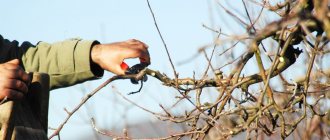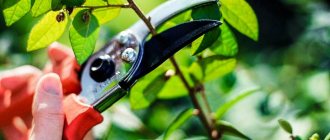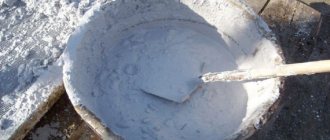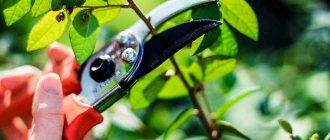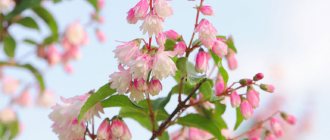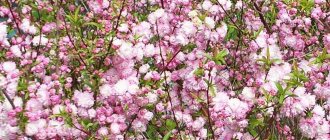Today we will present to your attention amazing ornamental trees and shrubs with golden foliage.
They are a real precious find for summer residents. Staghorn sumac 'Laciniata Aurea' - accent of the composition, photo by the author
Despite the fact that in the boring gray garden of the favorite of our site, Natalia (Bernata), preference is given to plants of a cold range, I hope that I will again read her thoughts from a distance and enjoy another story about yellow-leaved tree forms. Let me remind you that almost two years ago I introduced you to Variegated Tree Leaves - accents of dachas, among which there were several yellow variations:
- Privet ovate 'Aurea'
- Fortune's euonymus 'Emerald'n Gold'
- Japanese euonymus 'Aureovariegatus'
- Elderberry 'Plumosa Aurea'
- common hazel 'Aurea'
- Spiraea japonica 'Goldflame'
Trees with yellow leaves are not freaks or mistakes of nature at all, but full-fledged forms that captivate with their beauty.
They look luxurious in contrasting compositions, colorful hedges, in combination with woody or herbaceous species, in monogroups against the background of dark wood chips or other mulch. Golden woody flowers in contrasting compositions, photo by the author
Landscape architects and designers value them for their striking beauty. Yellow deciduous and evergreen species add luxury and a sense of celebration to the usual monotonous compositions of our dachas. Some forms and varieties are consistently golden, while the color of others is ephemeral, most often appearing in spring (on young leaves) and autumn (before leaf fall).
The golden Japanese euonymus 'Ovatus Aureus' is consistently decorative, photo by the author
The “sunny” beauty of such trees is especially impressive against the backdrop of typical green species and red-leaved forms; it is most expressive on cloudy, rainy and snowy days (evergreen forms on the southern coast of Crimea and the Black Sea coast of the Krasnodar Territory).
Japanese euonymus 'Ovatus Aureus' is at its brightest in spring, photo by the author
And, despite the abundance of herbaceous plants with yellow flowers and inflorescences, it is the golden woody ones that can play the role of the main characters in a “sunny” dacha.
Ads by
Honey locust 'Sunburst'
Having planted this golden beauty in your dacha, you can admire its beauty for two seasons (spring and autumn).
Honey locust 'Sunburst', appearance. Photo from the website kurowski.pl. Shoots close-up. Photo from pinterest.de A fast-growing, wide-conical tree 12 m high and 10 m wide with spreading, thornless branches. Young foliage is golden in color, then turns pale green (summer) and yellow again (autumn). It does not bear fruit, which is not bad - large beans do not pollute the area. With age, fruits are rarely formed. Unpretentious, grows in any well-drained soil, in full light, does not get sick, is drought-resistant. At the age of 20-50 it reaches its maximum height. It must winter in central Russia without shelter, as it can withstand down to -34°C (according to some sources - up to -40°C); In the first 3 years after planting, you can play it safe - cover it.
Propagated vegetatively: by cuttings and grafting into the root collar.
Which yellow perennials to choose for the garden
You can enjoy yellow flowers in the garden throughout the growing season, from the fragrant flowers of Mimosa and Narcissus in spring to late-blooming perennials such as Rudbeckia. Yellow is a cheerful, sunny color and is very versatile - it can be paired with colors in red or orange, or contrasted with blue or purple for a softer look.
Yellow perennials will bring a bit of sunshine to your garden
If you are having a hard time choosing or identifying the right yellow perennials for your garden, you can check out this list of the best yellow perennial flowers. These perennials are grouped according to their growth. For quicker access, you can simply click on the names below to learn more about how to care for them.
Catalpa bignonia 'Aurea'
The golden catalpa outfit is luxurious.
Its large heart-shaped yellow leaves, like burning candles, highlight the dark corners of the dacha, attracting attention. Undoubtedly, she is a spectacular solitaire! Catalpa bignoniiformes 'Aurea', appearance. Photo from the website okrasna-skolka.cz. Close-up of young shoots. Photo from rhs.org.uk. Deciduous tree 10 m high and wide. A distinctive feature is bright yellow shoots, young shoots are bronze.
Catalpa bignoniiformes 'Aurea' is a tapeworm. Photo from web03.bruns.de. She's in uniform. Photo from the site stromovous.net
Prefers moist, well-drained, fertile soils; resistant to heavy soils. Grows best in places protected from the wind. At the age of 20-50 it reaches its maximum height. Winter-hardy: critical winter minimum -28.8°C. In spring it can be damaged by return frosts. Resistant to diseases and pests, but can be affected by Verticillium wilt.
Propagated by semi-lignified cuttings and grafting.
Elderberry 'Aurea'
An additional decoration of the golden bush is large snow-white shields of inflorescences.
Black elderberry 'Aurea'. Photo from plante.md. Shoots, inflorescences close-up. Photo from hayefield.com An upright shrub with thick shoots 2.5-4 m high and wide. The leaves are golden yellow, on pinkish petioles. The inflorescences are flat, with white-cream flowers.
Easy to grow in alkaline, moderately fertile, moist, well-drained soils; Grows well in sun and partial shade. At 10-20 years it reaches its maximum height. Heat-loving: can withstand only -15-20°C for a short time.
Good in free-growing hedges and as a tapeworm. Propagated by semi-lignified cuttings.
Barberry Thunberg 'Aurea'
Golden barberries with yellow leaves are a divine gift from nature.
First of all, two of the most striking varieties of Thunberg barberry. Barberry Thunberg 'Aurea'. Photo from dimroslyn.com. He's in the composition. Photo from the site google.ru A prostrate, densely branched bush 1.5 m high and 2 m wide. The leaves are round: yellow in the spring, turn green in the summer, and return to a golden appearance when the leaves fall. Grows in any well-drained soil. Tolerates partial shade, more effective in full sun. At 5-10 years it reaches its maximum height. Withstands up to -39.9°C. May be affected by powdery mildew. Effective against a background of dark mulch. An additional decoration in autumn is red fruits. Used in dachas of any type in borders, when framing flower beds. Propagated by semi-lignified cuttings.
Trees and shrubs (flowers) with yellow flowers
If you want your garden to have not only trees with yellow leaves, but large woody green plants with yellow flowers, then you may be interested in the following:
Bobovnik anagyrofolia (Golden shower)
A beautiful tree with bright yellow flowers is often used both as a single plant and in group plantings in garden plots. Flowering time occurs in April-May. The height of the bean can reach two or more meters.
People call it “golden rain” because the inflorescences look like falling golden raindrops that can be seen among the bright green foliage.
Buddleia Davida (Butterfly Bush or Butterfly Ball) variety "SunGold"
This shrub blooms from late summer, and the petals have a sunny color with a light orange tint. The inflorescence of flowers is shaped like a lilac and has an incredibly tasty aroma that attracts a large number of butterflies and bees, which contributed to its name.
Spring witch hazel (Magic nut, Winterflower)
The peculiarity of this tree is that it blooms twice a year, namely from April to May, and also in autumn. The flowers are yellow, quite large, with a pleasant aroma. Under favorable conditions, the tree grows more than 2 meters.
The main advantages of growing witch hazel in the garden are:
- not picky about care;
- It is quite frost-resistant, so it does not require shelter in winter;
- flowers remain on the branches until frost sets in;
- long flowering period.
Karagana
There are several varieties:
- Caragana tree (Acacia yellow or pea).
An ornamental shrub (rarely a tree) with beautiful yellow fragrant flowers, which are located on branched branches. The height can reach up to 5-7 meters. The flowering period begins in May-June. The shrub is not picky about soil and tolerates drought and frost well. A wonderful honey plant. It is recommended to use it as a hedge along a personal plot or as a group composition among green-leaved and other colorful plants. Responds well to a haircut.
- Caragana shrubby.
The shrub form has a height of up to 2 meters, otherwise it has similar characteristics and growing requirements.
By the way! If your summer cottage is located on a slope, then caragana is an ideal shrub that perfectly stabilizes the slopes.
Rhododendron yellow (Azalea pontica)
This deciduous, yellow-flowering shrub plant will be the highlight of a “sunny garden.” It can reach a height of 2-4 meters.
The main advantages of growing this shrub are:
- ease of care;
- high frost resistance;
- excellent adaptability in a new place of growth;
- flowering time is 3 months (from April to June);
- has a strong and pleasant aroma;
- in autumn it remains very decorative due to the bright color of the leaves.
By the way! There is also a golden rhododendron,
but it is almost impossible to grow it under artificial conditions, because the plant suffers greatly due to elevated summer temperatures.
Rose yellow
Roses are probably one of the most beloved plants, so it is quite common to find rose bushes in the garden. Roses with yellow buds are no exception, which will become a decoration among other bright flowers. A brief description of:
- a huge variety of varieties and species;
- the height and size of the bushes directly depends on the variety and type;
- flowers also come in different sizes and shapes;
- can be bushy or climbing (climbing).
Particular attention should be paid to such varieties of climbing roses as Goldstern and Casino. These climbing shrubs can become a real decoration of the garden several times in one season.
You can also distinguish the following yellow-flowering varieties:
- Golden Celebration;
- Crown Princess Margaret;
- Berolina;
- Gina Lolobrigida.
Barberry Thunberg 'Bonanza Gold'
Cushion-shaped dense shrub with lemon-golden leaves 45-60 cm high, 60-90 cm wide. Thunberg barberry 'Bonanza Gold'.
Photo from the site. In mono composition. Photo from google.ru This is a dwarf variety. Effective in sun and partial shade. Blooms in mid-summer. Doesn't produce seeds. The growth is small, but with strong growth it must be formed. Resistant to trampling. Tolerant of dry and wet soils, but does not tolerate stagnant waterlogging. Tolerant to pollution. Withstands -34.4°C. Propagated by semi-lignified cuttings.
Biological features of the original culture
In order to properly imagine the bright highlight of the garden, let’s begin the description of the forsythia shrub with a photo. Considering its external beauty, we note the bright buds that sit tightly on the graceful shoots of the plant. Miniature bells consist of 4 oblong-shaped petals. Depending on the variety, they can be bright yellow, lemon or greenish in color.
The size of the buds reaches approximately 3 cm in diameter. After successful pollination, the bells turn into original fruits. They are boxes filled with winged seeds.
The shrub is propagated using seeds, layering and cuttings.
The yellow forsythia bush is considered a close relative of the famous olive tree. This is indicated by the unique shape of the jagged leaf plates. They can be from 2 to 15 cm in length. Their surface is painted green, which changes its shade in the sun. Thus, the shrubs retain their attractiveness throughout the season. During the “lush nature of wilting”, the leaves of the crop become purple in color, and it takes on a unique appearance.
Viburnum gordovina 'Aureum'
The golden form of this species is still an infrequent guest of our dachas.
Viburnum gordovina 'Aureum'. Photo from the site vladgarden.ru Deciduous shrub 2 m high and wide. Effective in the open sun, but at the end of summer burns may appear on the leaves, so it is advisable to shade it in the afternoon in summer (at least throw gauze on it). Resistant to everything; withstands -34.4°C. You can choose ornamental trees and shrubs with yellow leaves in our catalog, which presents offers from the largest online stores.
Spiraea japonica Golden Princess (V2l.) 450 rub.
Agrofirm Search
Barberry Thunberg Aurea (V2l.) 558 rub.
Agrofirm Search
Forsythia propagation
Japanese spirea shrub or “Bride” - description
Forsythia can be propagated by cuttings and seeds.
Cuttings
Cuttings approximately 15 cm long are cut in June. The leaves located at the bottom are carefully removed. The cuttings need to be treated with a substance that stimulates the process of root formation. After this, they are planted in a greenhouse with sand.
Rooting of lignified cuttings is considered as a method of propagation. They are cut in the fall (optimally in October). The cuttings are planted in the soil.
Propagation of forsythia by cuttings
Important! With this method of planting, it is necessary that several buds remain above the surface.
The cuttings are covered with leaves for the winter. They will begin to grow in the spring. In the fall, strong and viable seedlings will grow from them.
Forsythia also reproduces using layering. In summer or early autumn, the lower young shoot is bent to the ground by pulling its base with wire. The bark is cut on the side that is in contact with the ground. The shoot is sprinkled with soil (or a mixture of soil and manure). Very soon such a shoot will have adventitious roots.
In spring, the accessory branch is cut off. The young plant will bloom next spring.
Growing from seeds
The seeds are removed in October and placed in a cool room for 2 months. In March, they are sown in a box with a nutritious soil mixture, which is placed in a greenhouse. The box must be covered with glass.
After about a month, shoots appear. Young plants grow very slowly. They are planted only next year. During the second summer, seedlings grow to approximately 30 cm and require mandatory shelter. Only in the third year does the seedling reach 90 cm in height and is used for planting.
Laurel 'Aurea'
What could be more exotic than a golden bay leaf?
But the yellowness of the leaves is ephemeral, and it is most vibrant in the spring. Laurus nobilis 'Aurea'. Photo from springmeadownursery.com Evergreen shrub 4-8 m high and 2.5-4 m wide. Leaves are golden yellow.
Grows well on the southern coast of Crimea and the Black Sea coast of the Krasnodar Territory in any well-drained soil. Doesn't get sick in open ground. Can be grown in a container. At the age of 20-50 it reaches its maximum height. Withstands -5°C. Propagated by semi-lignified cuttings.
Criterias of choice
When choosing shrubs that bloom in autumn, we consider:
- is it possible to grow in the conditions of the area where you live, is the composition and moisture of the soil suitable;
- is the climate suitable, are you ready to create special conditions if necessary;
- whether new plants will add attractiveness to the garden in winter;
- Will the dimensions of an adult bush allow comfortable maintenance in the area allocated for planting? It is not advisable to buy large plants for a small area;
- How the plant tolerates pruning is important: bushes that do not tolerate pruning well and that are difficult to shape will need to be replaced with young seedlings as they age.
With the right selection of plants, it is not difficult to make the garden attractive at different times of the year. Perennial shrubs blooming in autumn, harmoniously integrated into the overall design of the site, are the best confirmation of this.
Viburnum foliage 'Luteus' and 'Dart's Gold'
In front of you are two more golden deciduous shrubs.
The first is 2.5-4 m high and wide, the second is 2 m high and 2.5 m wide. Luteus. Photo from rhs.org.uk. Viburnum foliage 'Dart's Gold'. Photo from the site fortis-center.ru. Both reach their maximum height at 5-10 years; prefer the sun, but look great in partial shade. They can become chlorotic, but they thrive better in well-drained, moderately moist, fertile, acidic to neutral soils.
Propagated by semi-lignified cuttings (in summer) and shoots.
And in front of us are already two golden Japanese spireas.
Euonymus
The shrub is suitable for open, well-lit areas.
Euonymus is tall, the height of the branches reaches 2 m, this is the case if the plant is formed as a bush. The beginning of flowering falls in May; the flowers are pale green, small, odorless, and do not attract much attention. But the small-sized fruits, which ripen in September, delight with their bright colors and give trees or bushes extreme decorativeness. In shape they resemble star-shaped flowers. A bush strewn with fruits can easily be mistaken for a flowering one.
We invite you to watch a video about shrubs that bloom in autumn, as well as other ornamental plants that will decorate your garden:
The decision to plant euonymus on a site should be made taking into account the fact that the plant is poisonous.
Spiraea japonica 'Goldflame'
One of the most beautiful golden spireas.
She has been able to fill the “sunny” dacha with the luxury of yellow leaves since May. Japanese spirea 'Goldflame', photo by the author One of the most common golden species with a height and width of 75 cm. Young leaves are bronze-red, then yellow, then medium green.
The 'Golden Princess' variety is another yellow beauty.
Spiraea japonica 'Golden Princess'. Photo from the site zvetsad.com.ua
It has purple-pink flowers; The leaves are first bronze-red, then light yellow, turning red again in the fall.
Staghorn sumac 'Laciniata Aurea'
A very beautiful deciduous tree.
Staghorn sumac 'Laciniata Aurea', photo by the author Height and width 2 m. Another modern new variety that appeared in 2004 is interesting - 'Tiger Eye' 1.8 m high, 2.4 m wide.
Staghorn sumac 'Tiger Eye'. Photo from ru.pinterest.com. He is in a tub in the silver garden. Photo from ru.pinterest.com.
It is effective in sunny and partially shaded places. In winter, it can withstand temperatures of -34.4°C for a short time. Propagated by division and root suckers.
Origin, description
Fortecia shrub is an ancient genus of plants. The natural habitat is scattered in Asia. The only species found in Europe is Fortisia europaea.
Blooming forsythia
Interesting. The plant is named after the British gardener Forsythe. He brought a bush from China.
This is a low tree, a bush from 1 to 3 m in height. The bark is rough, gray or brown. Leaves without stipules, long, oppositely arranged.
The flowers are bell-shaped, yellow or pale yellow. The plant blooms in early spring. Flowers develop within 3 weeks. After they bloom, a box is formed, inside of which there are seeds.



